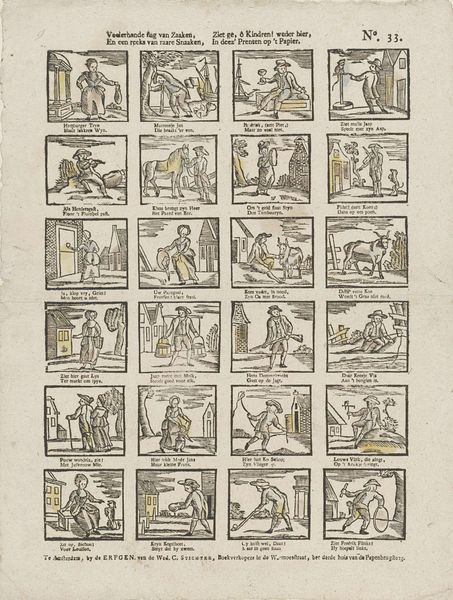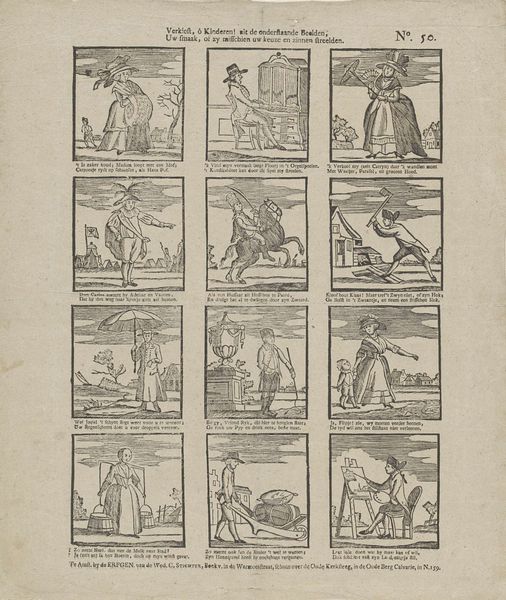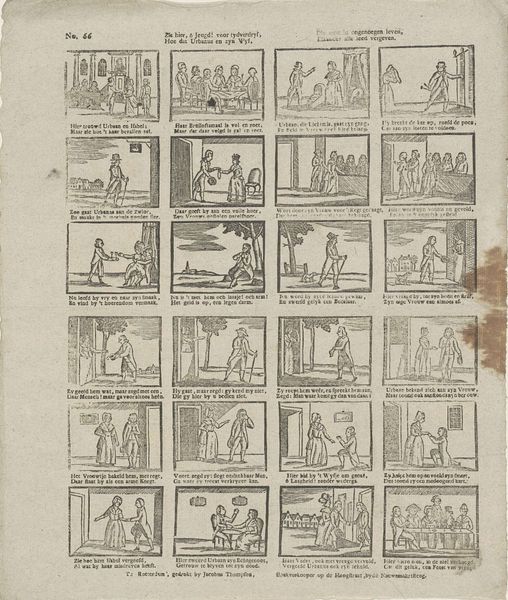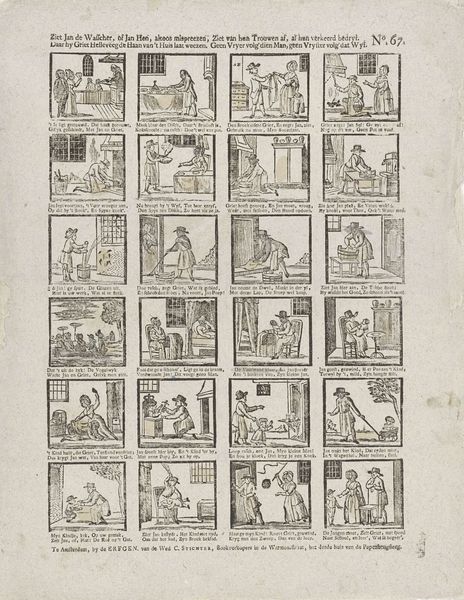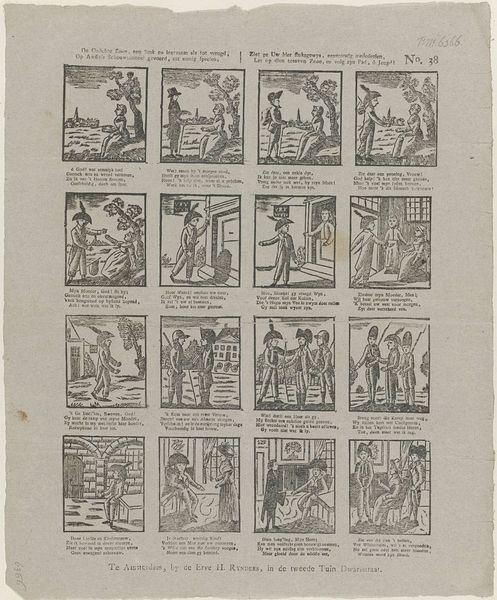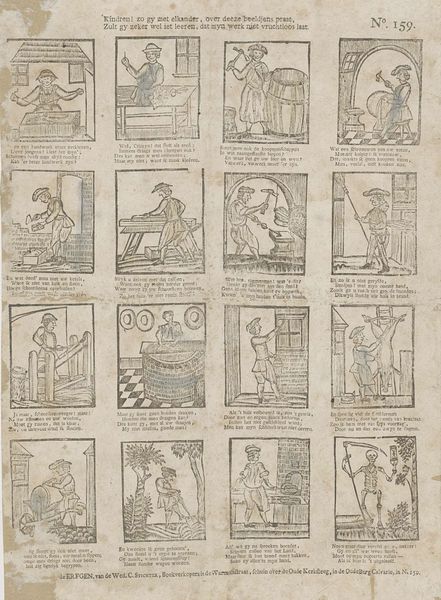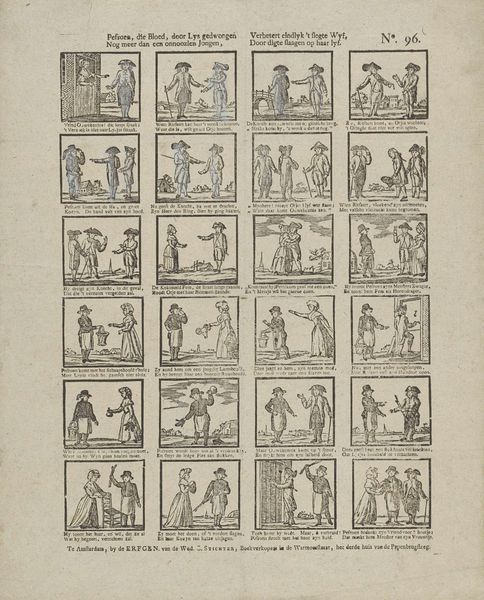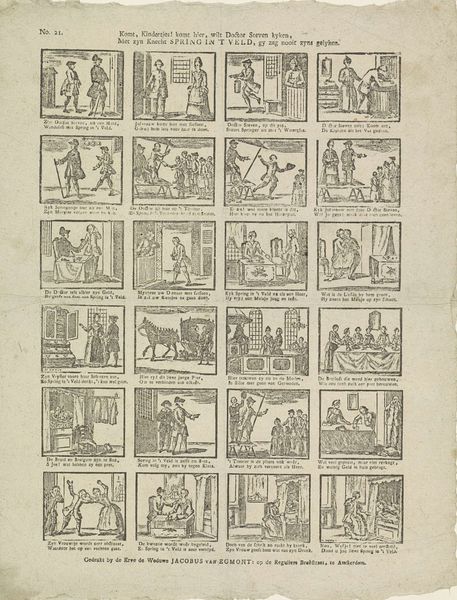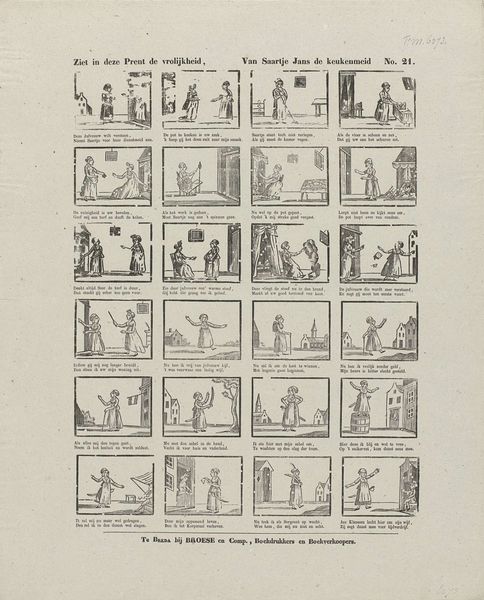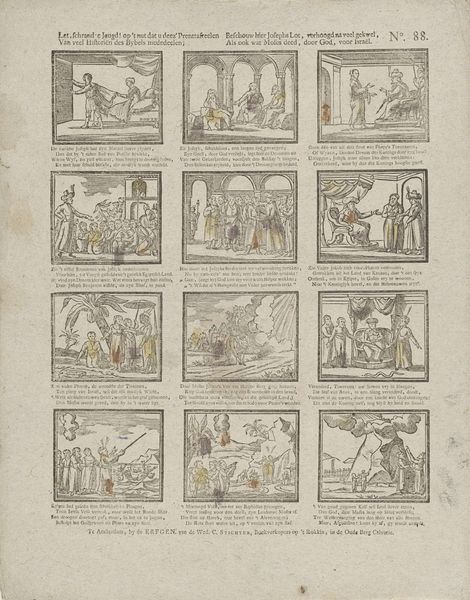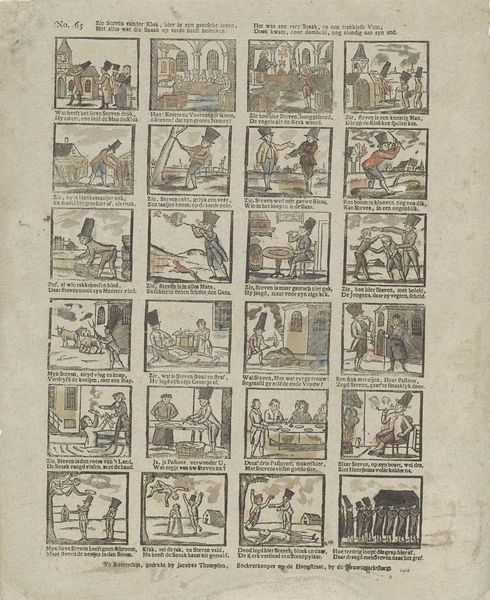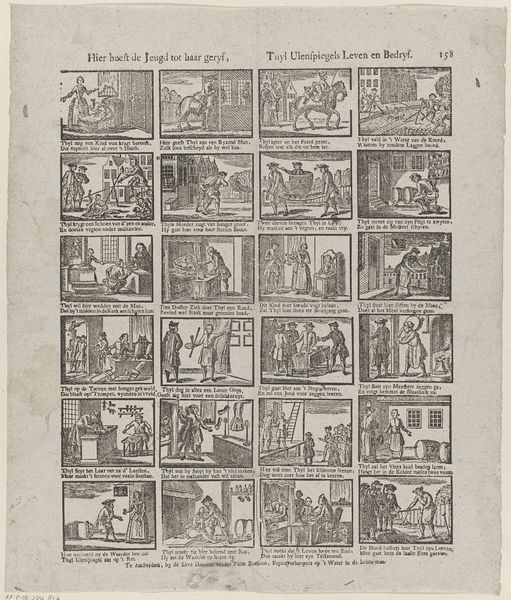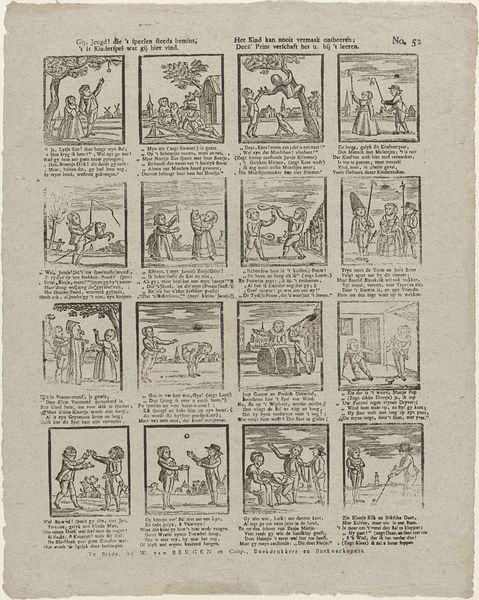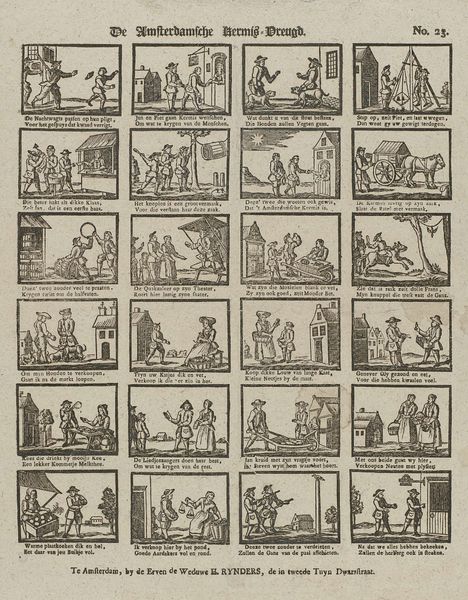
Het zoetst uws levens in (ô jeugd beschouw 't maar wel,) / Niets dan een losse vreugd, en ydel kinderspel. / De minste zorg nochthans hecht zich aan die vermaaken; / Zoek door verstand en deugd vroegtydig grootr zaaken 1715 - 1813
0:00
0:00
jrobyn
Rijksmuseum
drawing, print, etching, engraving
#
drawing
#
comic strip sketch
#
light pencil work
#
quirky sketch
#
narrative-art
#
dutch-golden-age
# print
#
etching
#
sketch book
#
personal sketchbook
#
idea generation sketch
#
sketchwork
#
sketchbook drawing
#
genre-painting
#
storyboard and sketchbook work
#
sketchbook art
#
engraving
Dimensions: height 420 mm, width 329 mm
Copyright: Rijks Museum: Open Domain
Editor: We're looking at "Het zoetst uws levens in," a print made sometime between 1715 and 1813 by J. Robyn, currently at the Rijksmuseum. It's a series of small, framed images of children, almost like a comic strip, and it makes me think about the different ways children are perceived throughout history. What formal elements stand out to you? Curator: The rigorous geometry employed is particularly compelling. Observe the grid-like structure: twelve distinct rectangular frames, each containing a miniature scene. The artist’s deployment of line – etched with considerable precision – articulates each figure and object within these self-contained worlds. This creates a visual rhythm. Editor: So, you’re seeing a real focus on the lines and shapes themselves, rather than, say, the stories the pictures might be telling? Curator: Precisely. Consider the relationship between positive and negative space. The figures, rendered in meticulous detail, exist in stark contrast to the relatively খালি negative space of the background within each frame. It pushes us to examine the artist's manipulation of visual elements rather than relying on any pre-conceived sentimentality. It’s interesting that the inscription also appears as an integral component of the overall composition rather than a separate, purely semantic element. Editor: I see what you mean about the lettering. It’s almost another shape in the design. Curator: Indeed. Furthermore, consider the texture created through the etching process. The fineness of the lines suggests a deliberate attempt to control and modulate the surface quality of the print. Editor: This has completely altered my perception! I came in with assumptions about the piece and now I'm looking at it from an angle I had not conceived was even there. Curator: My goal is to facilitate viewers discovering their angle. Therein resides art's immeasurable significance.
Comments
No comments
Be the first to comment and join the conversation on the ultimate creative platform.
